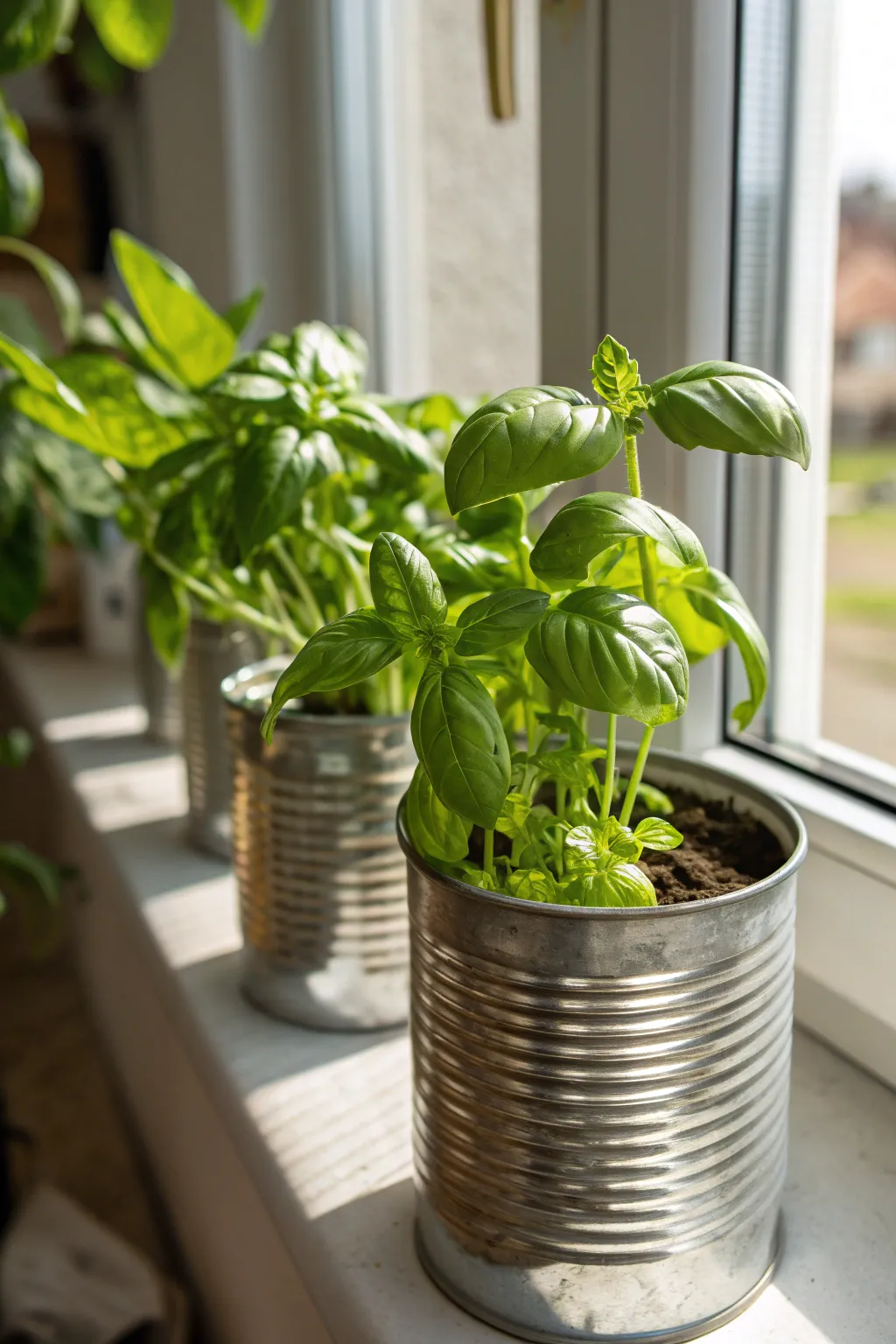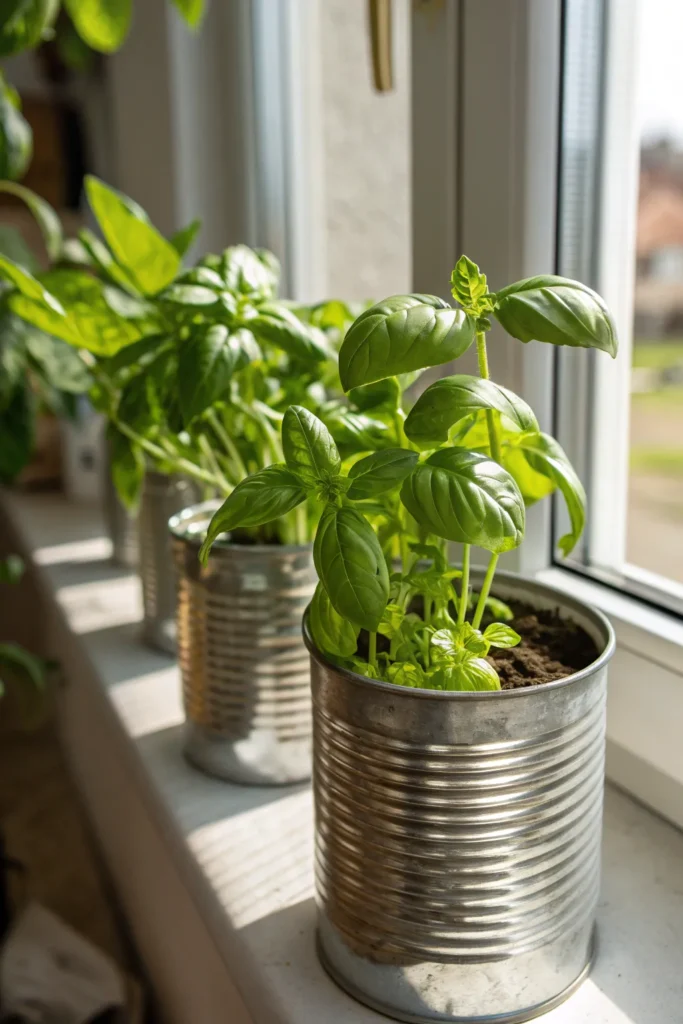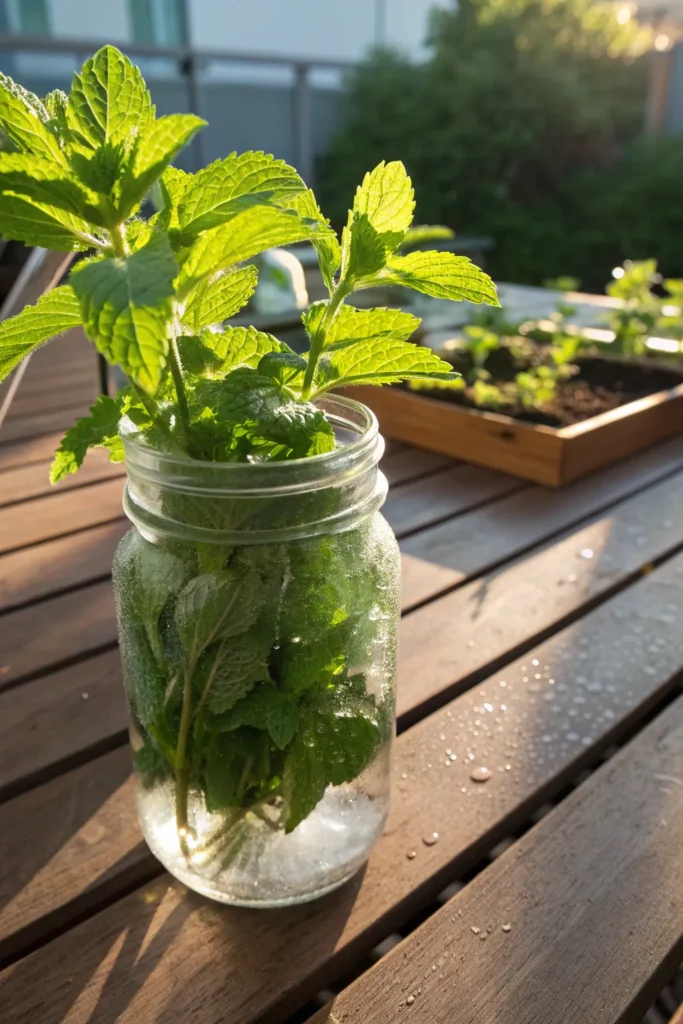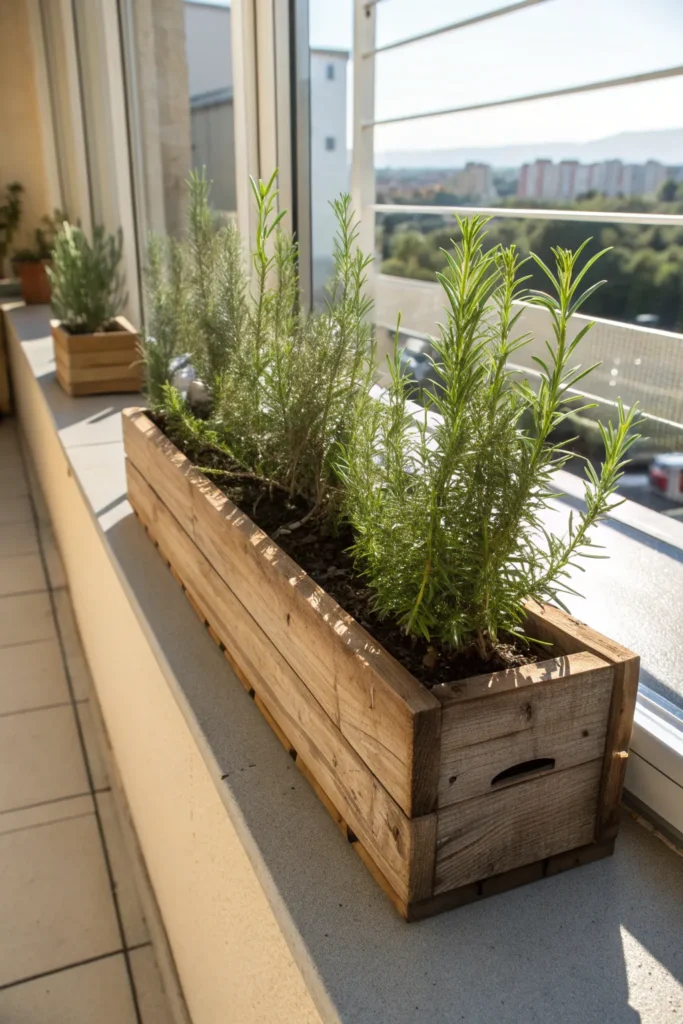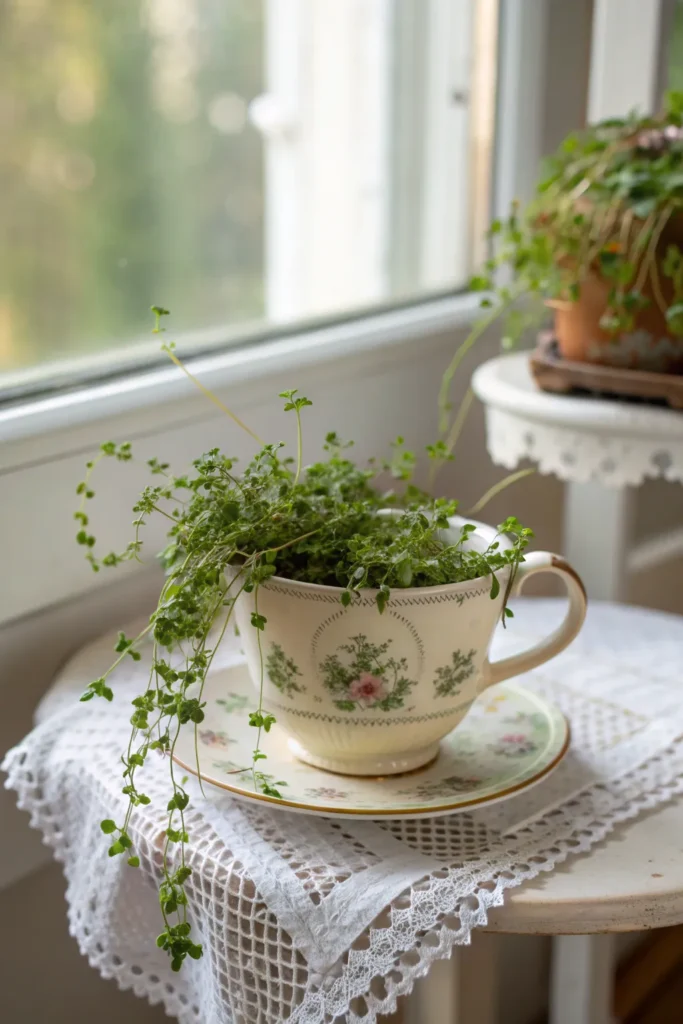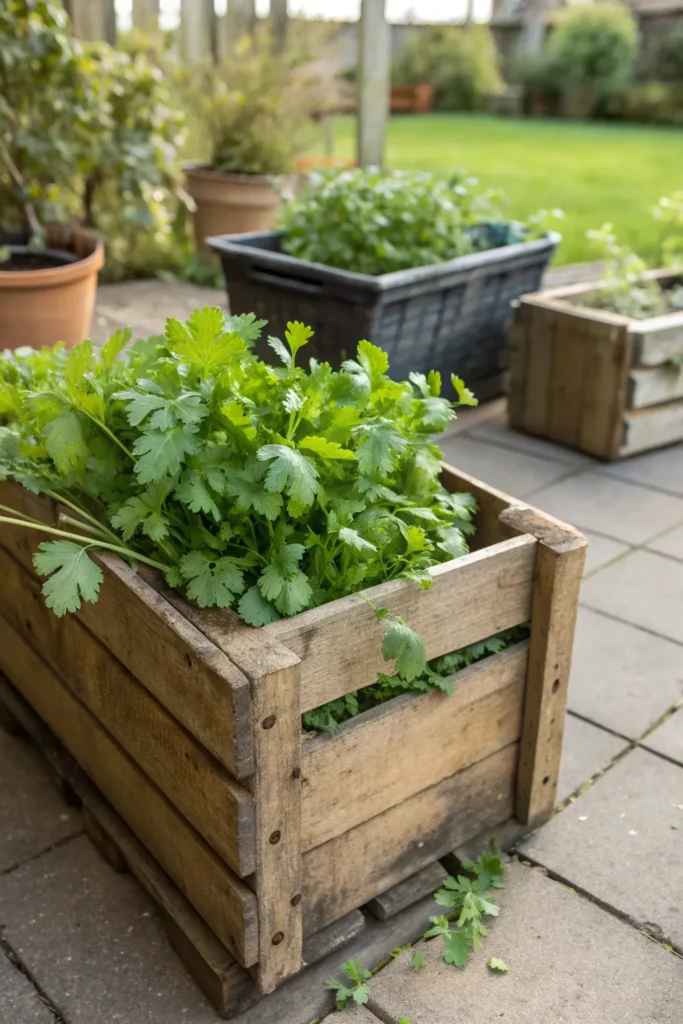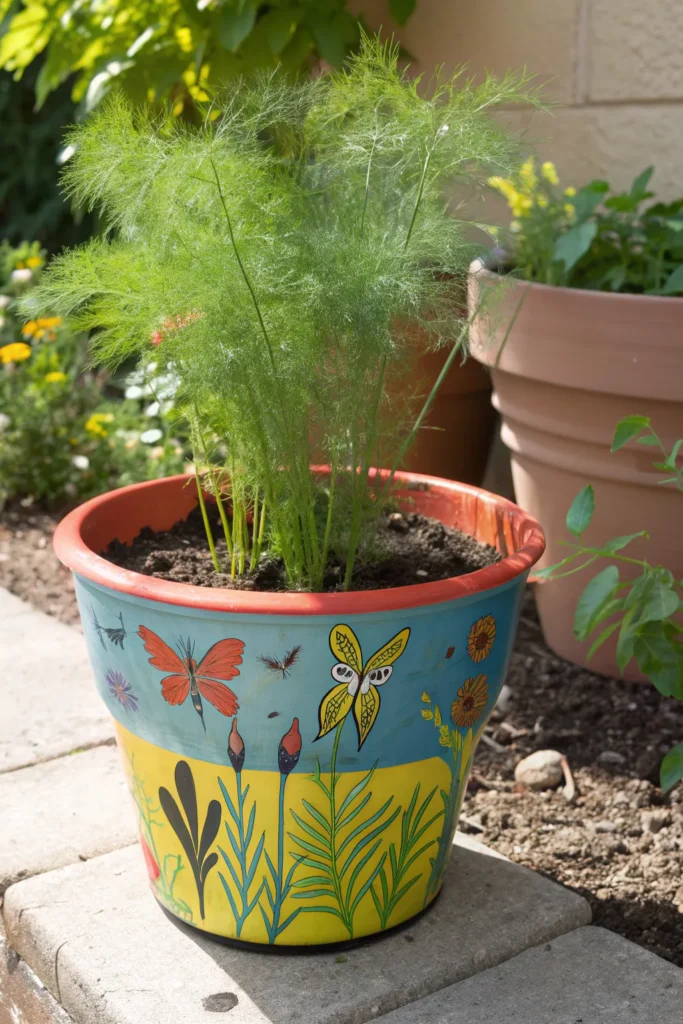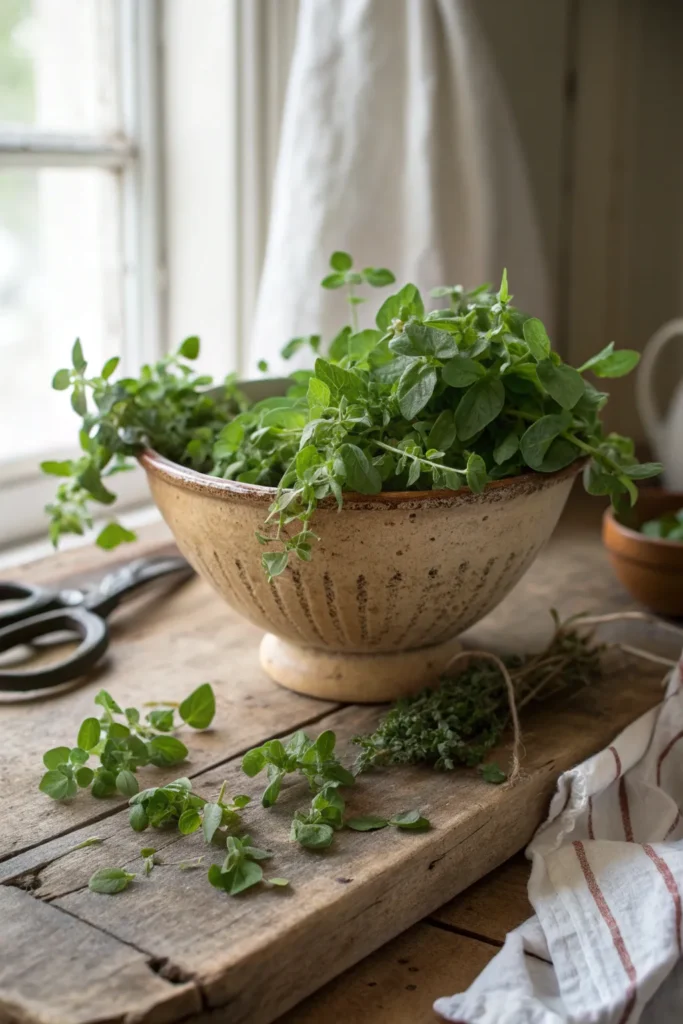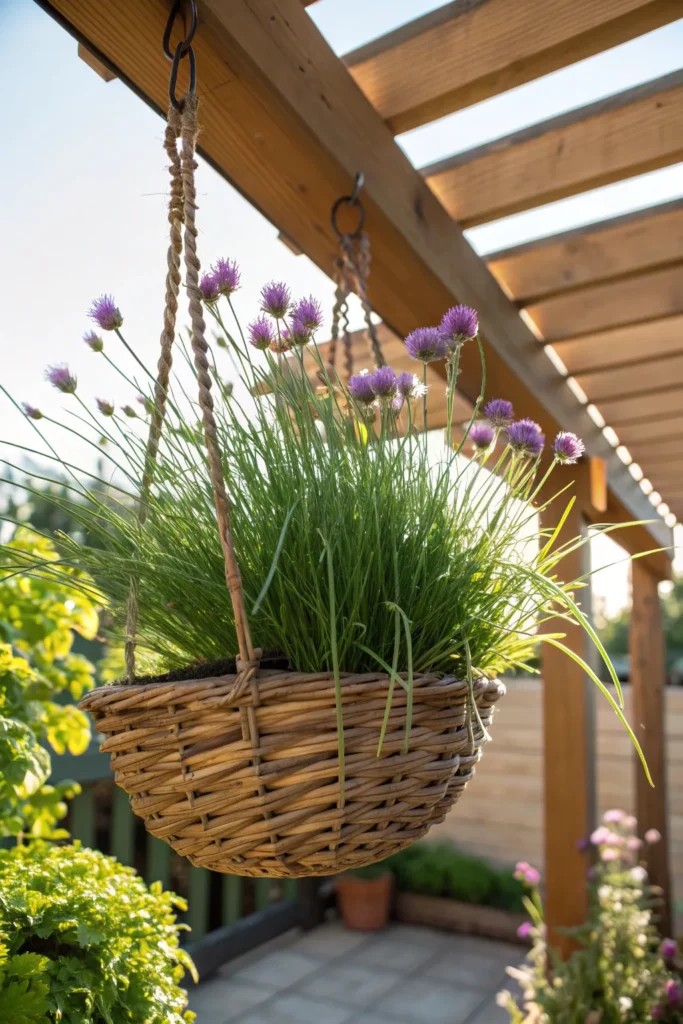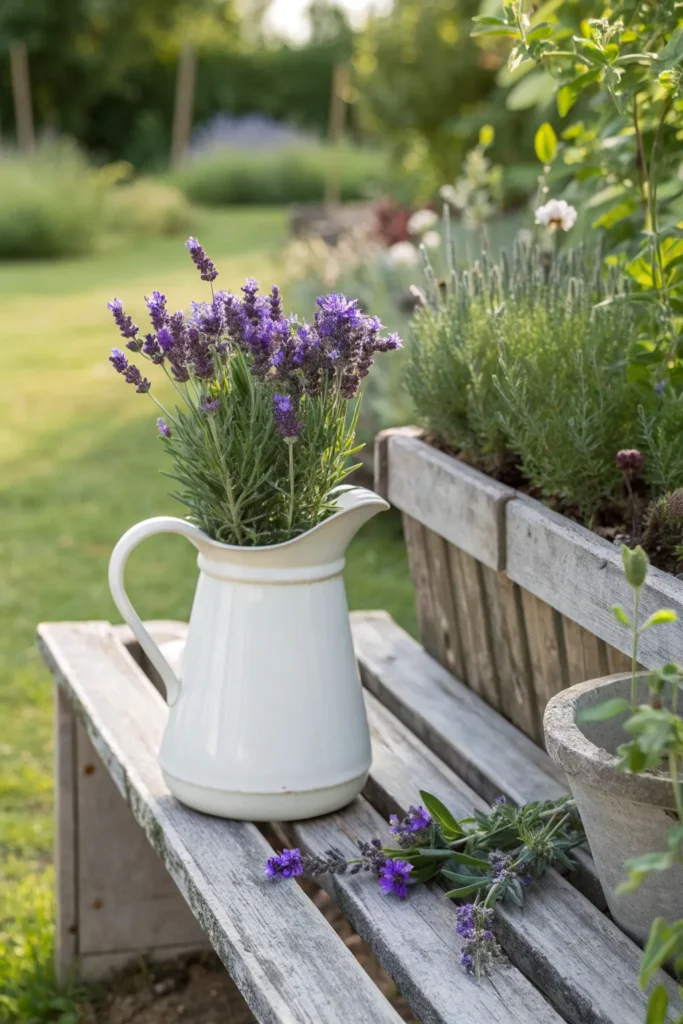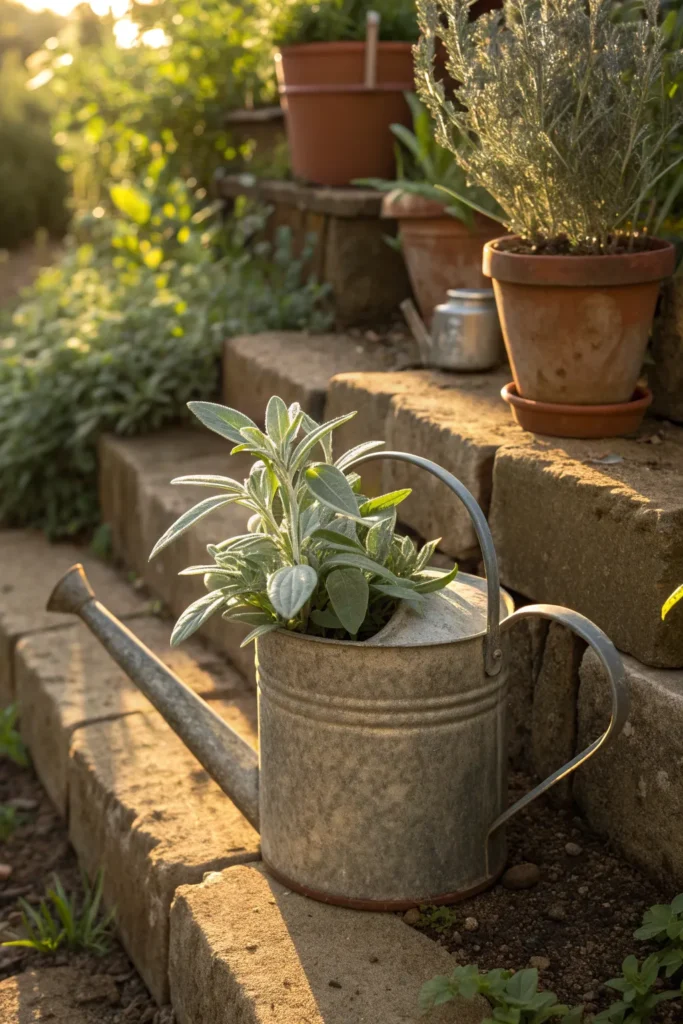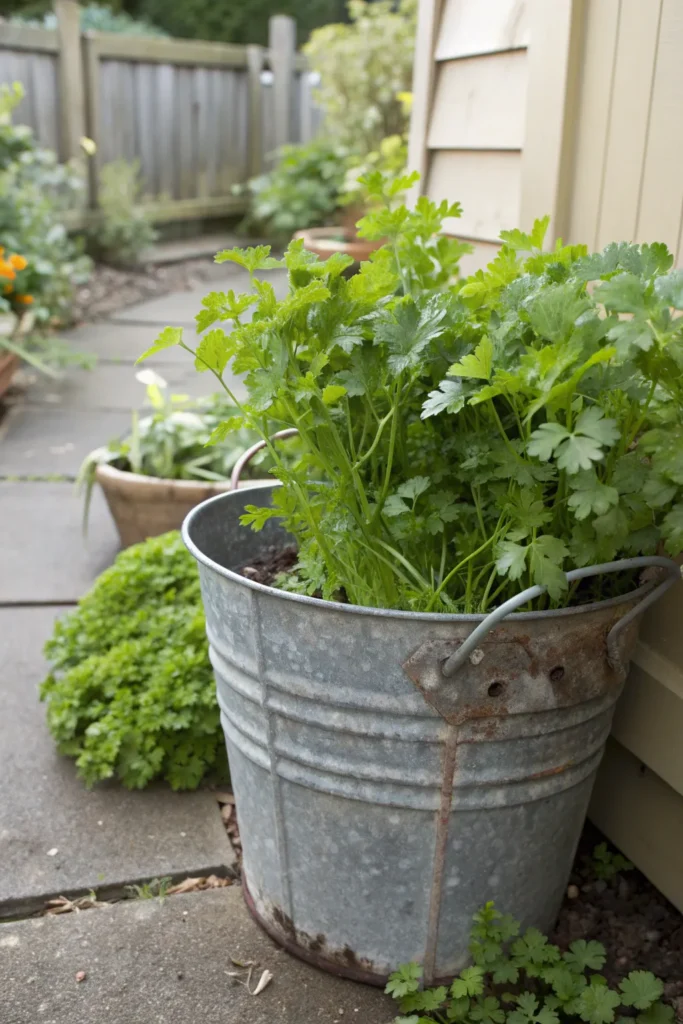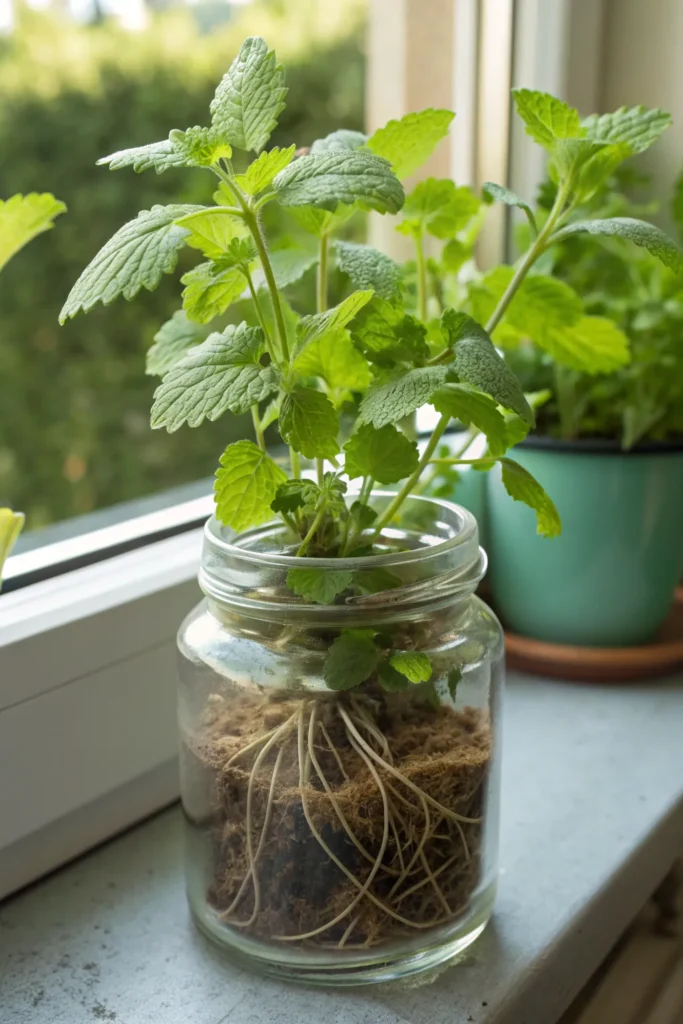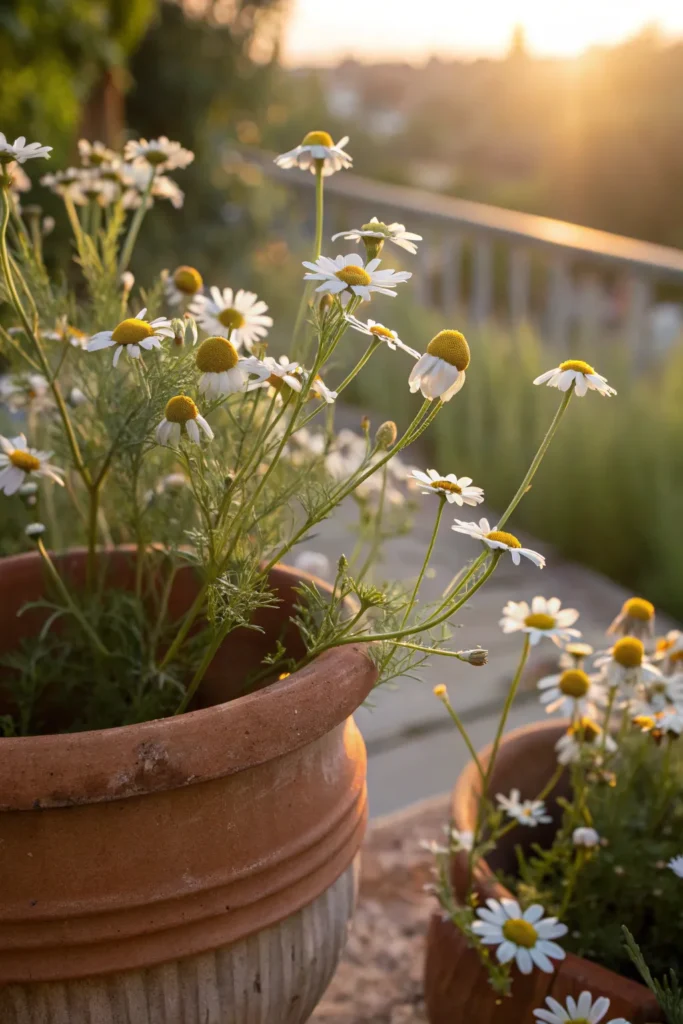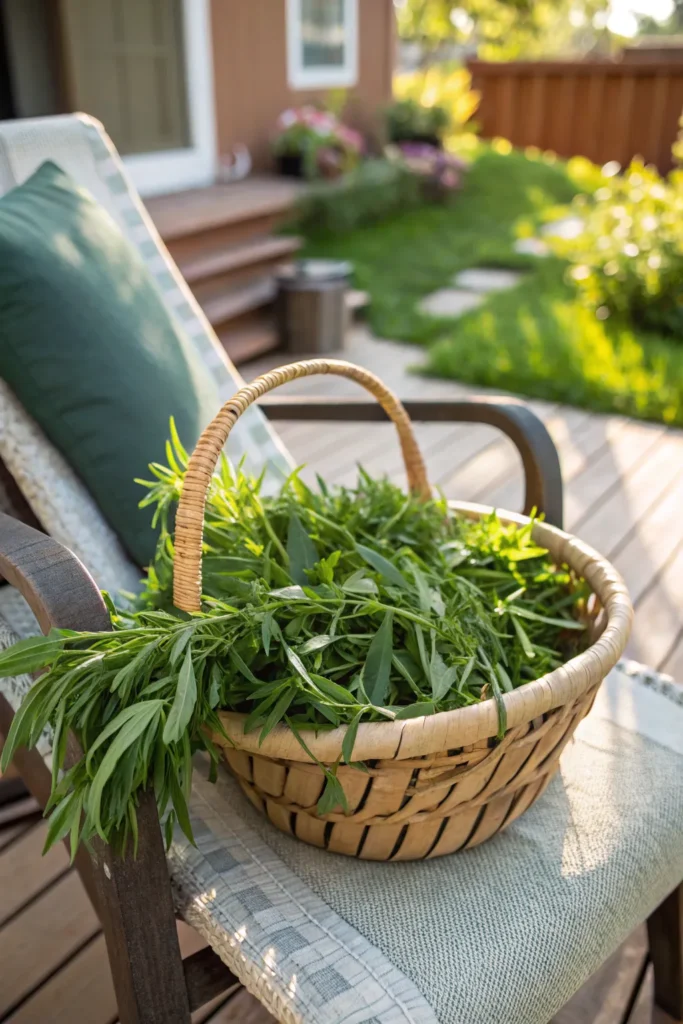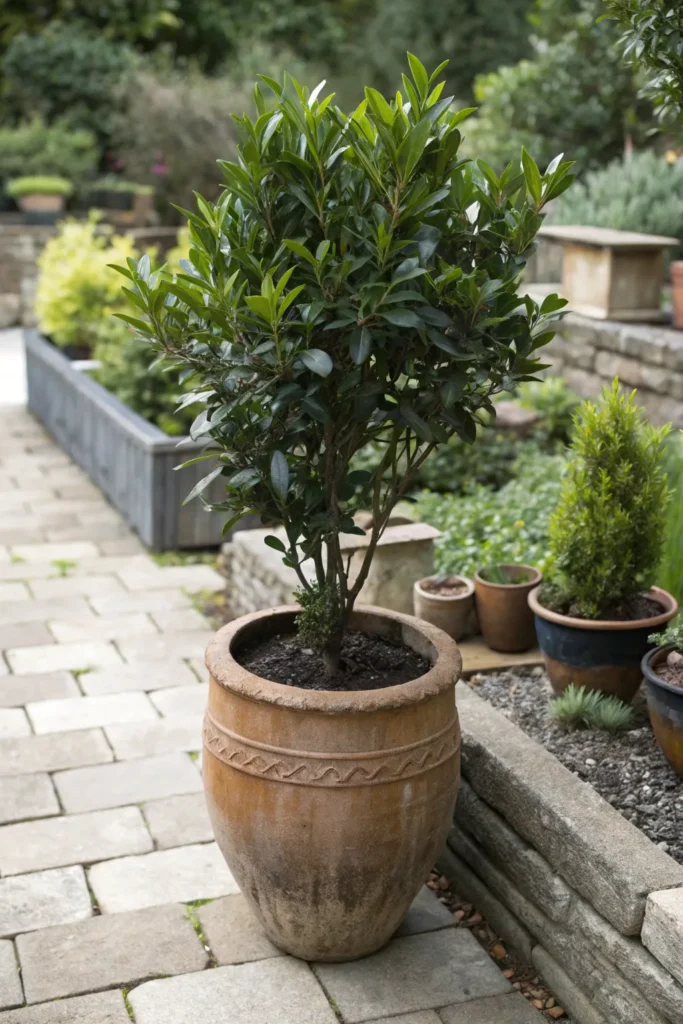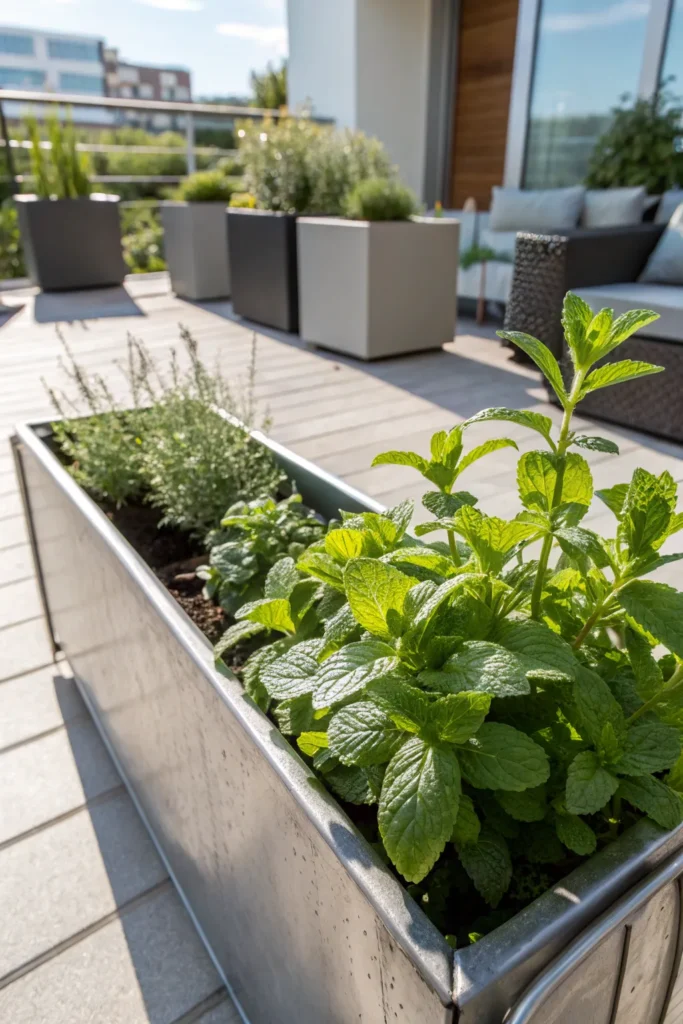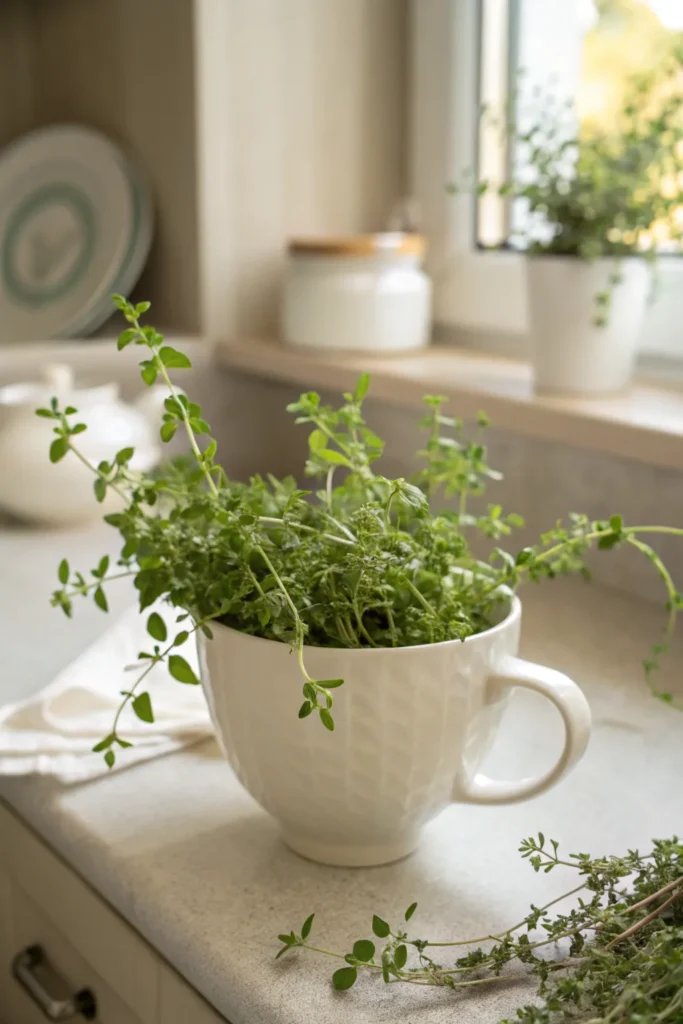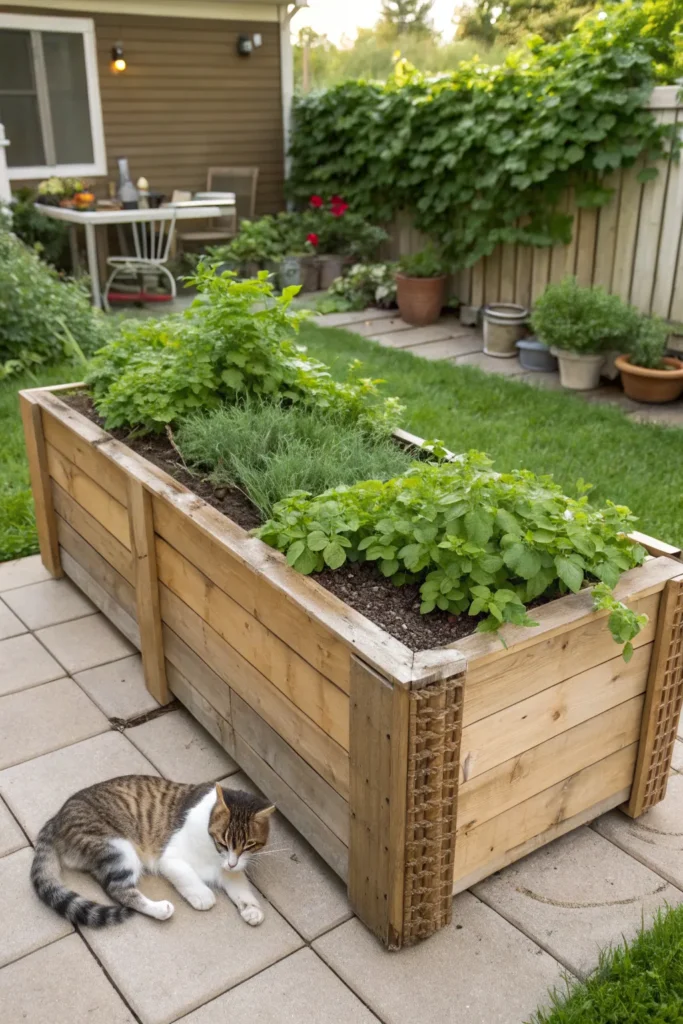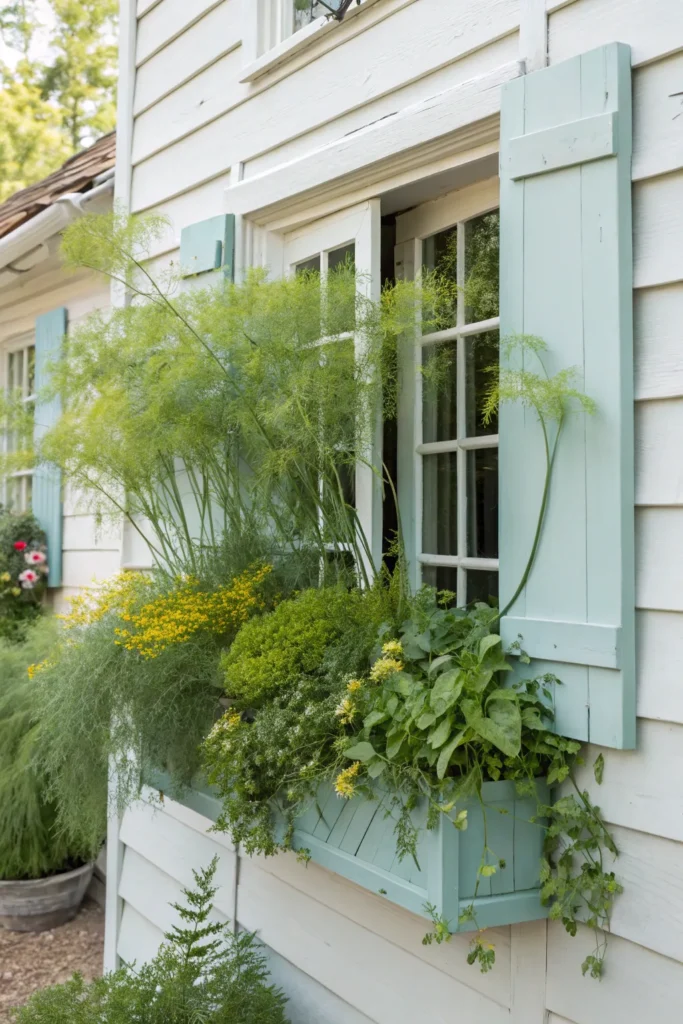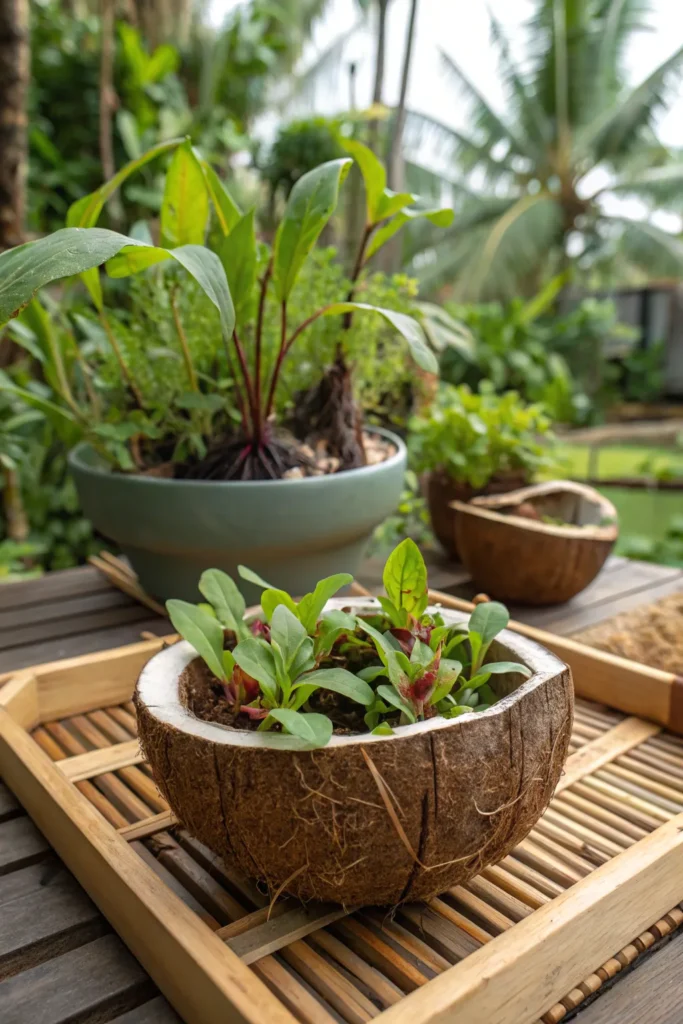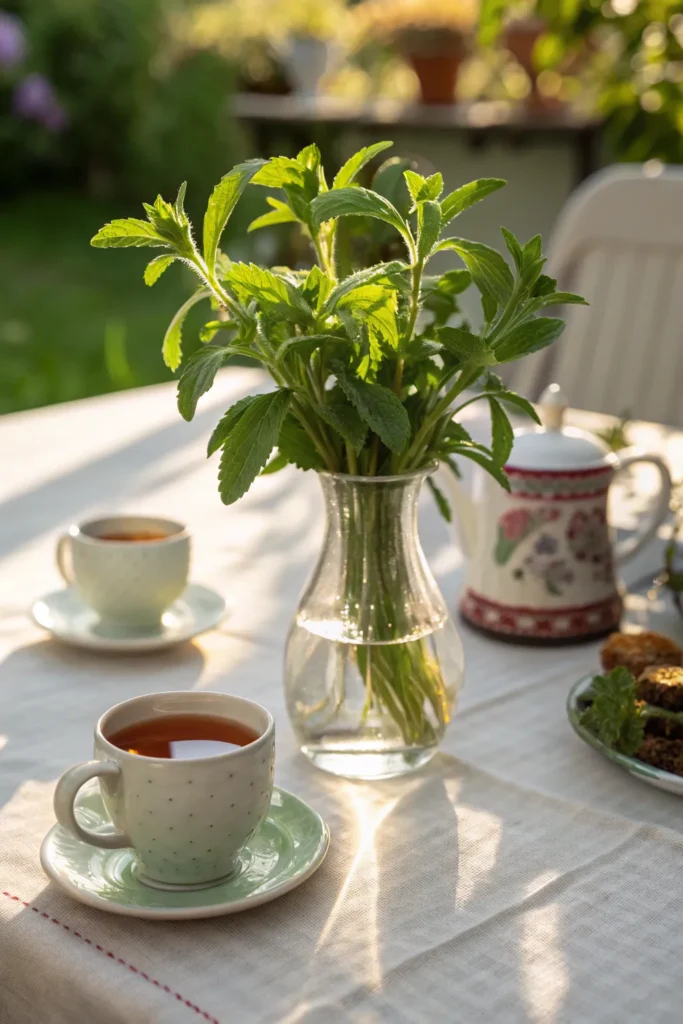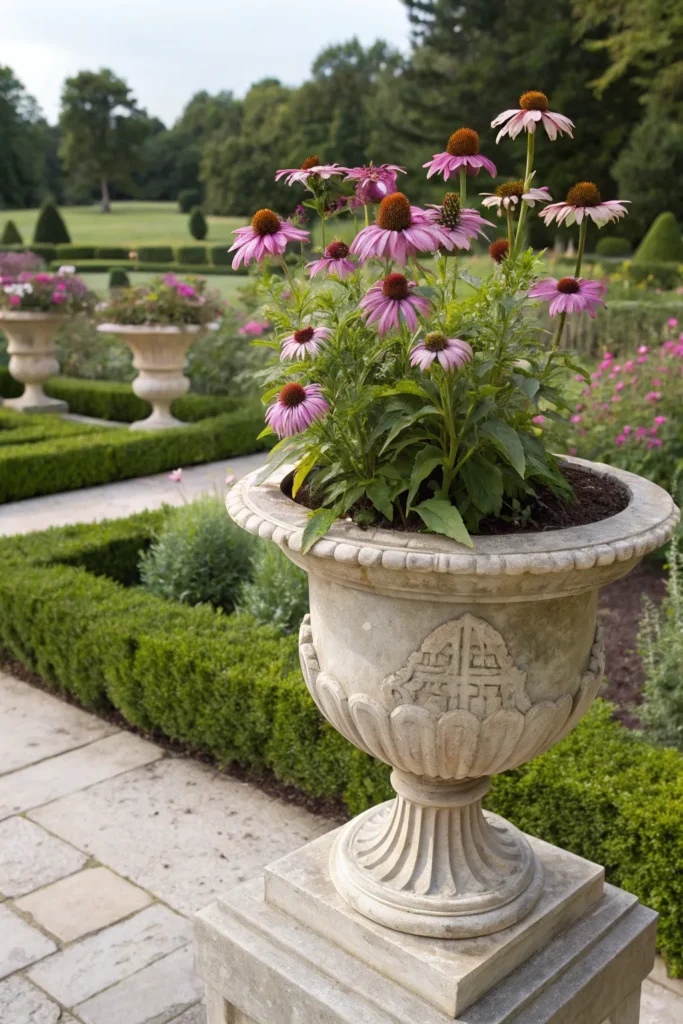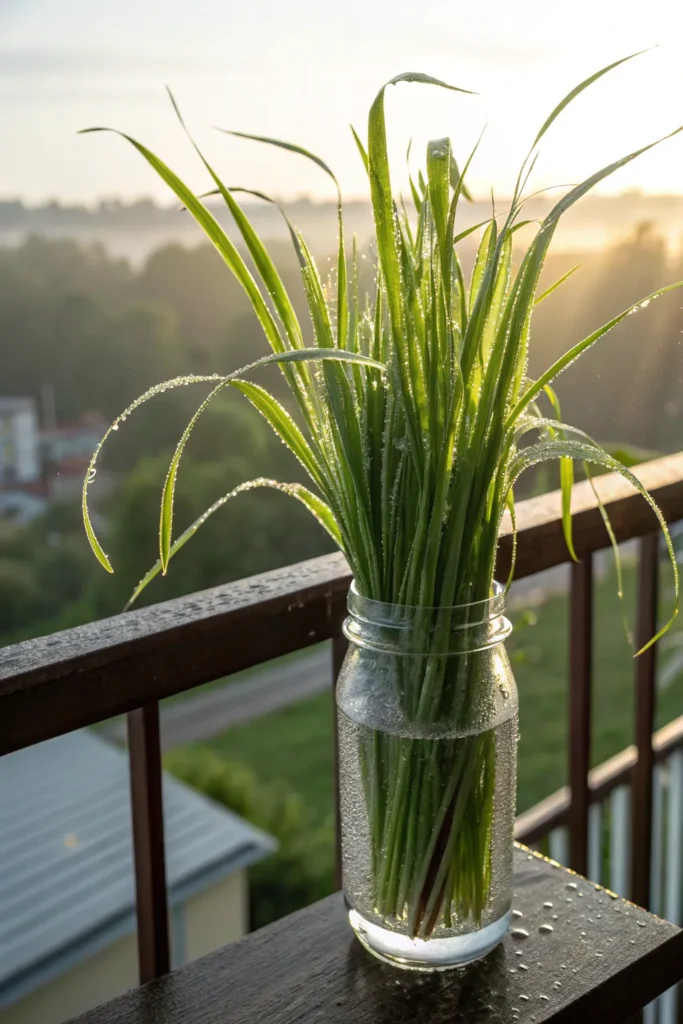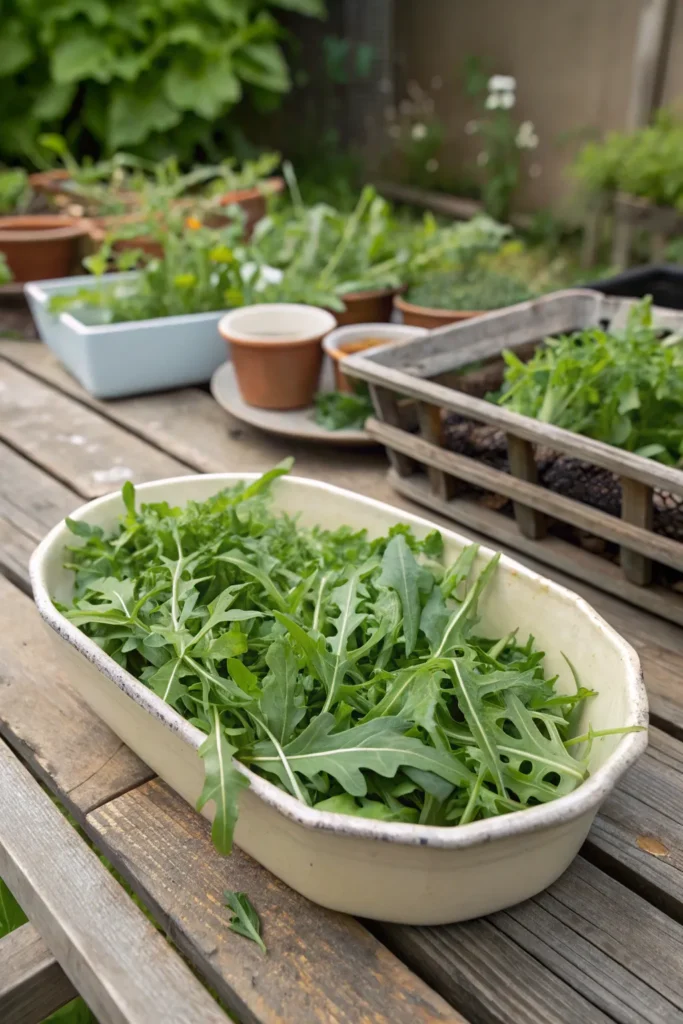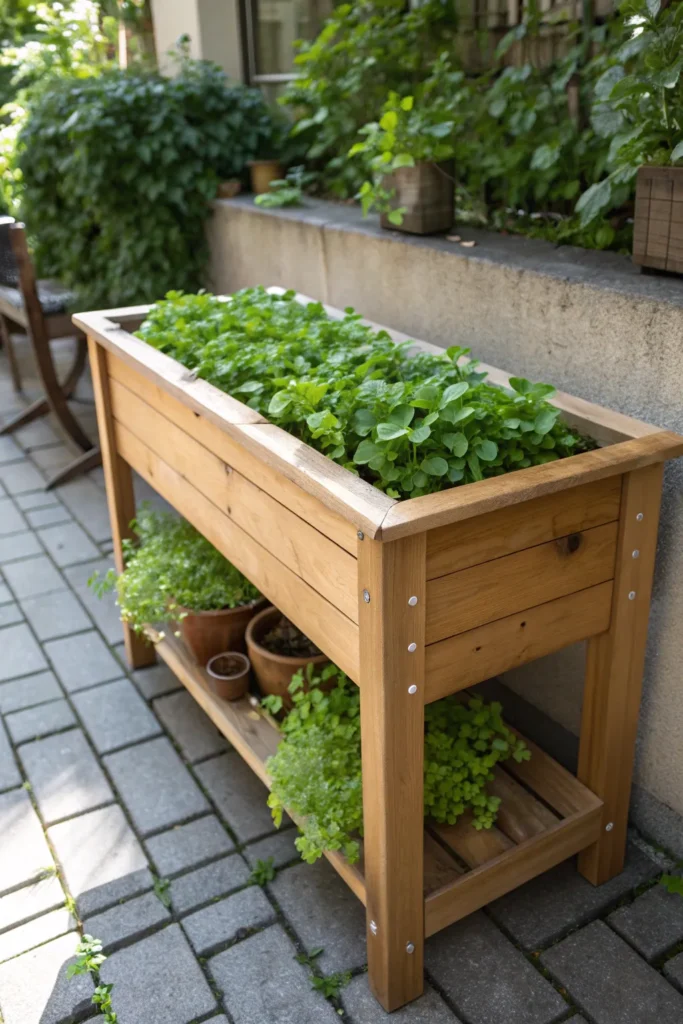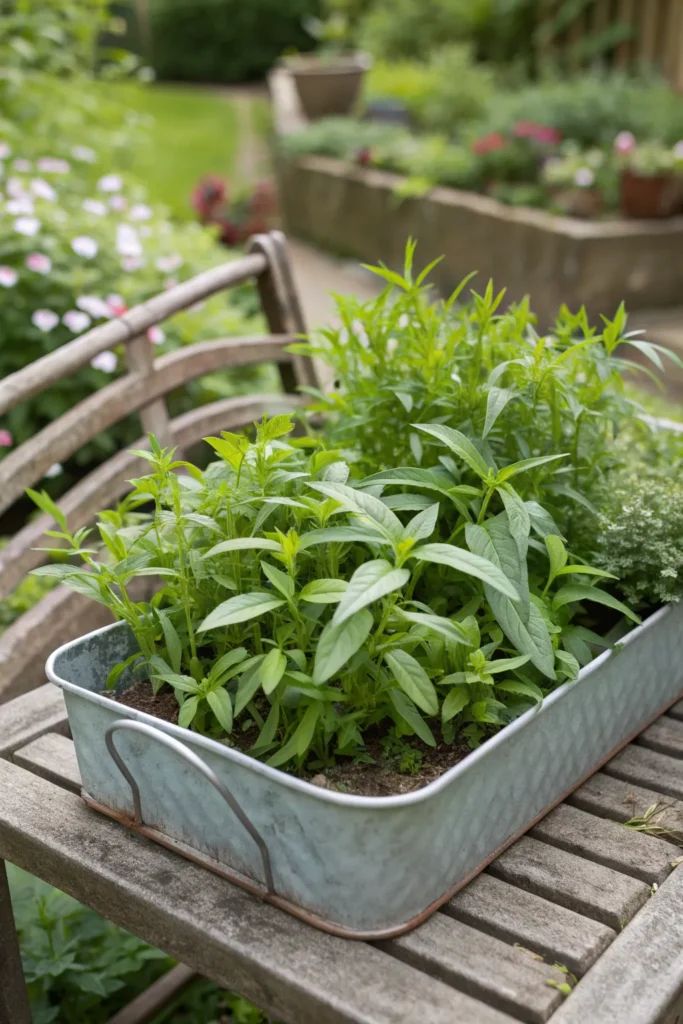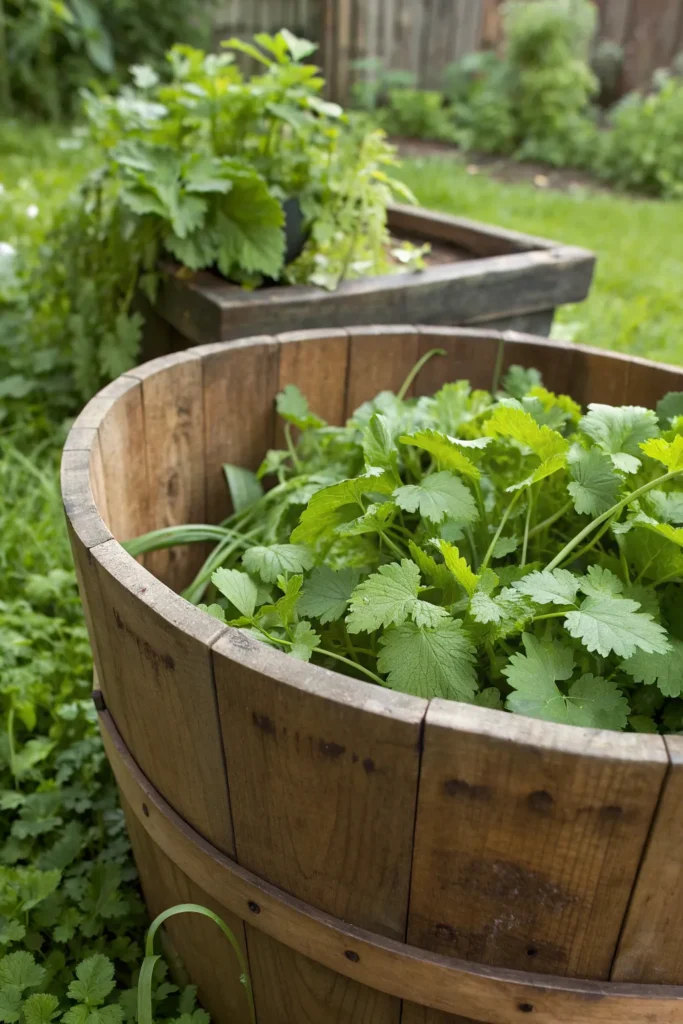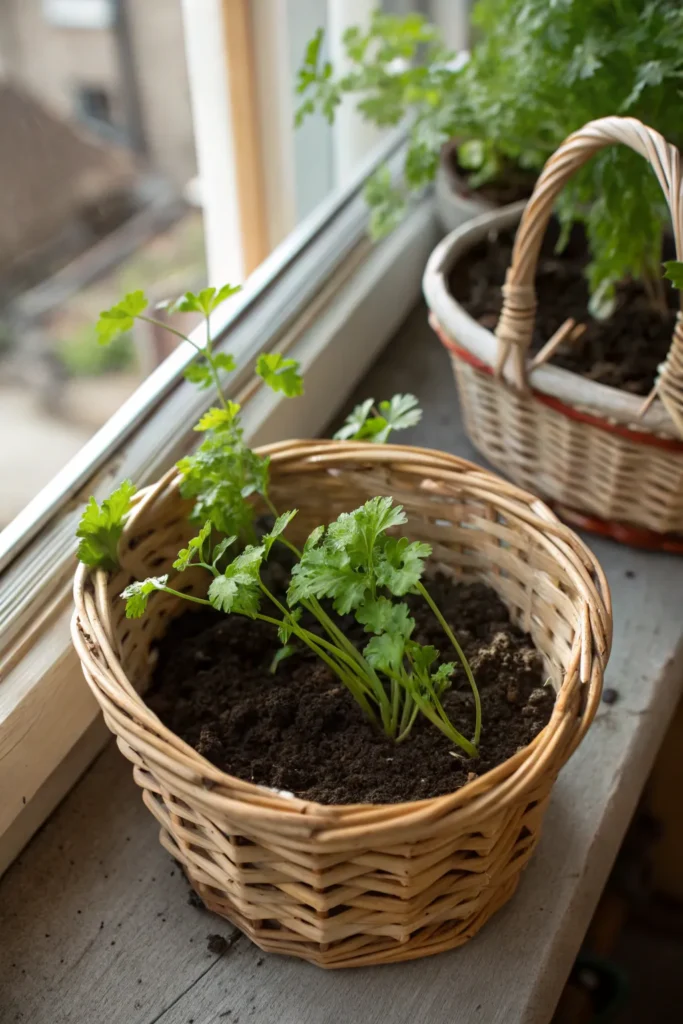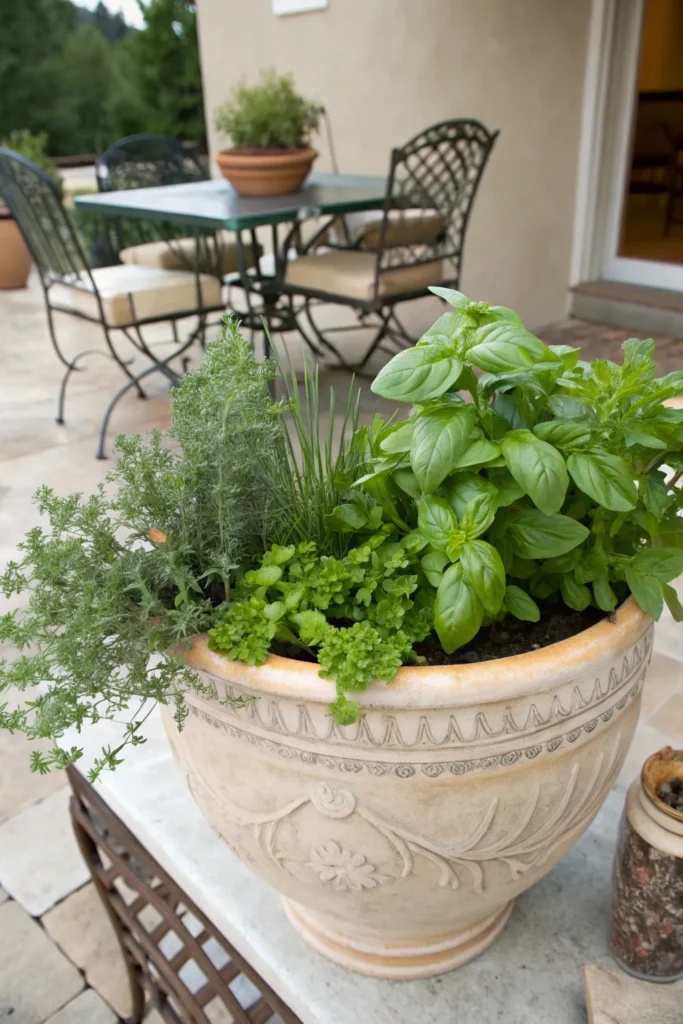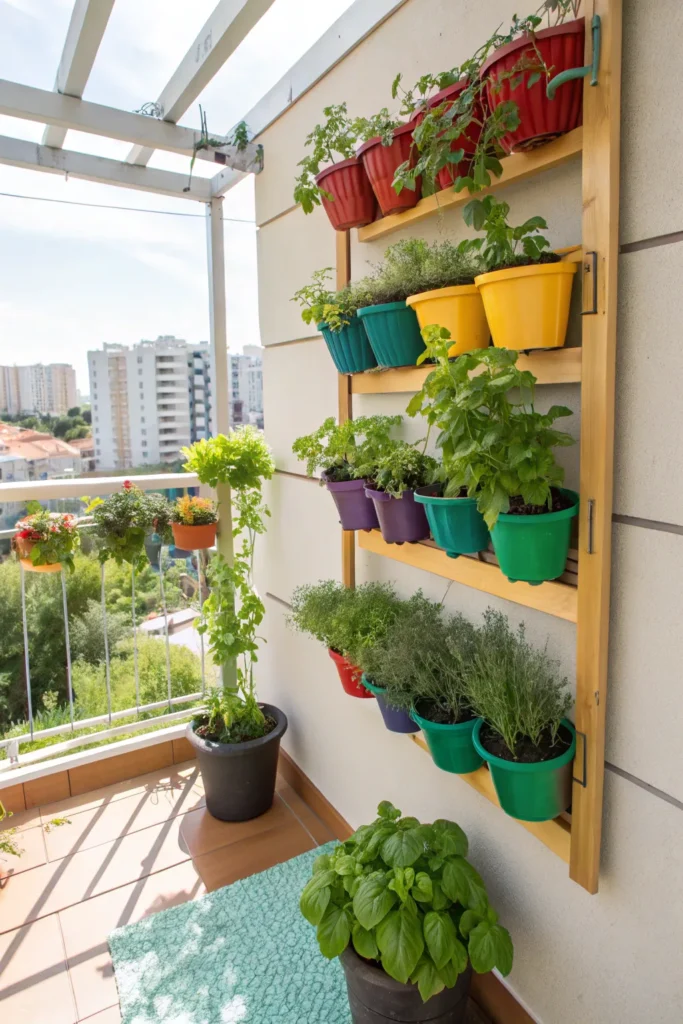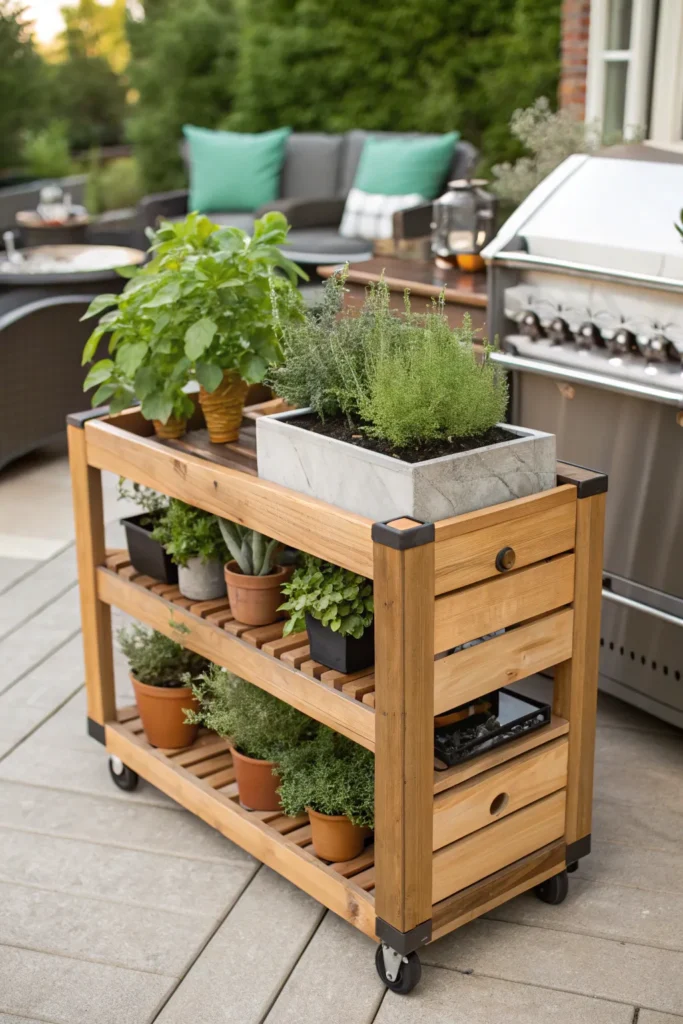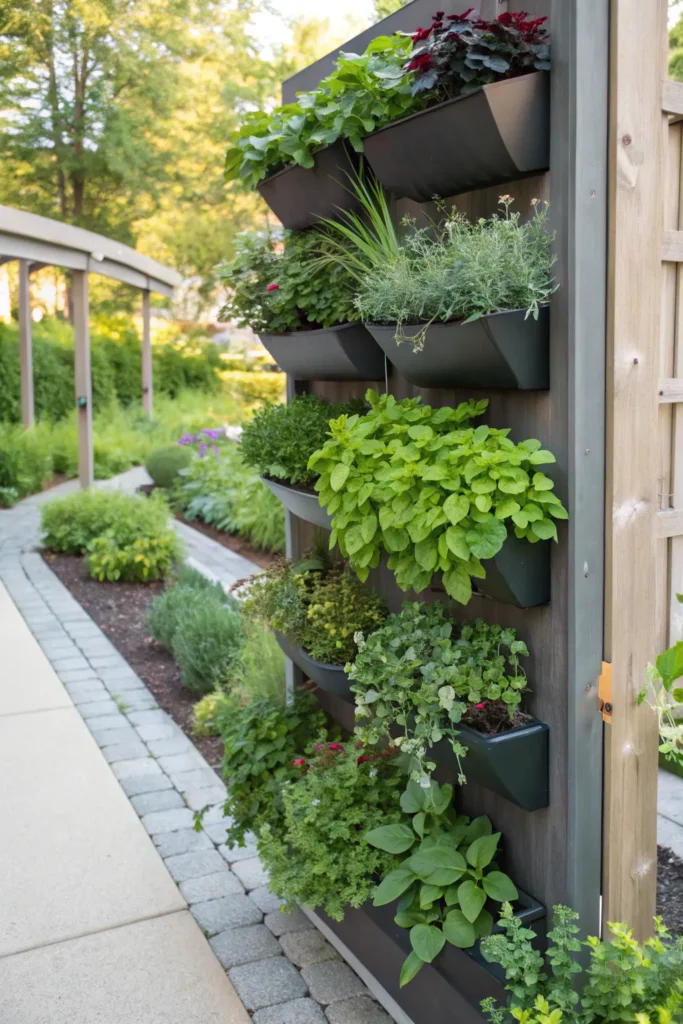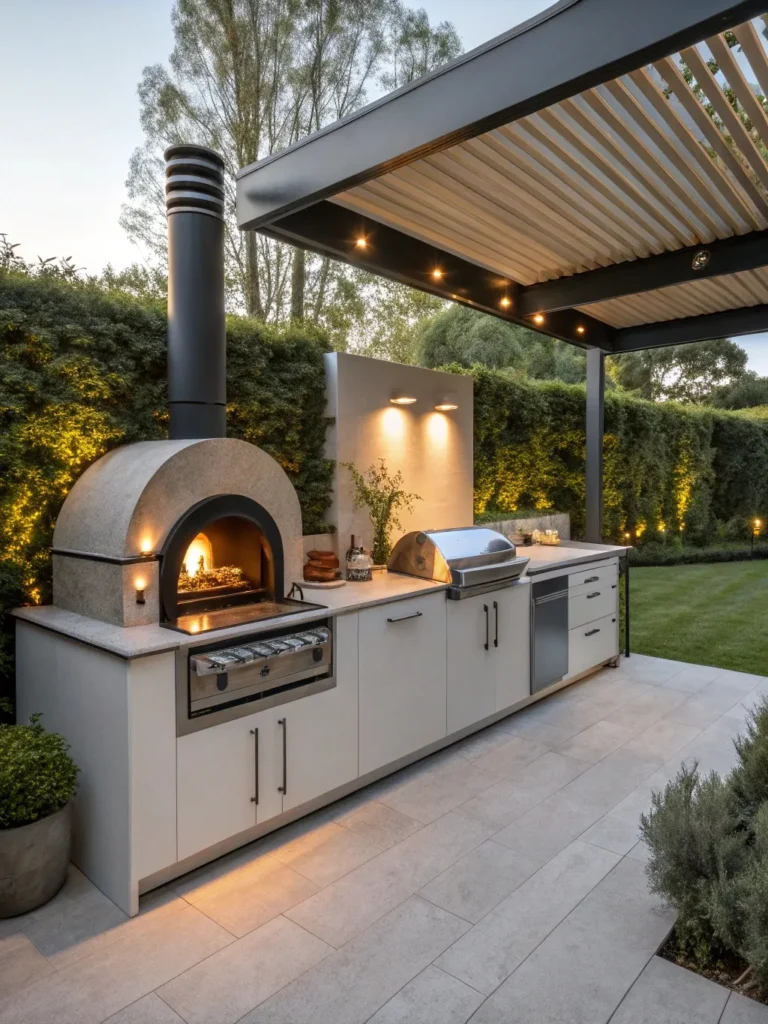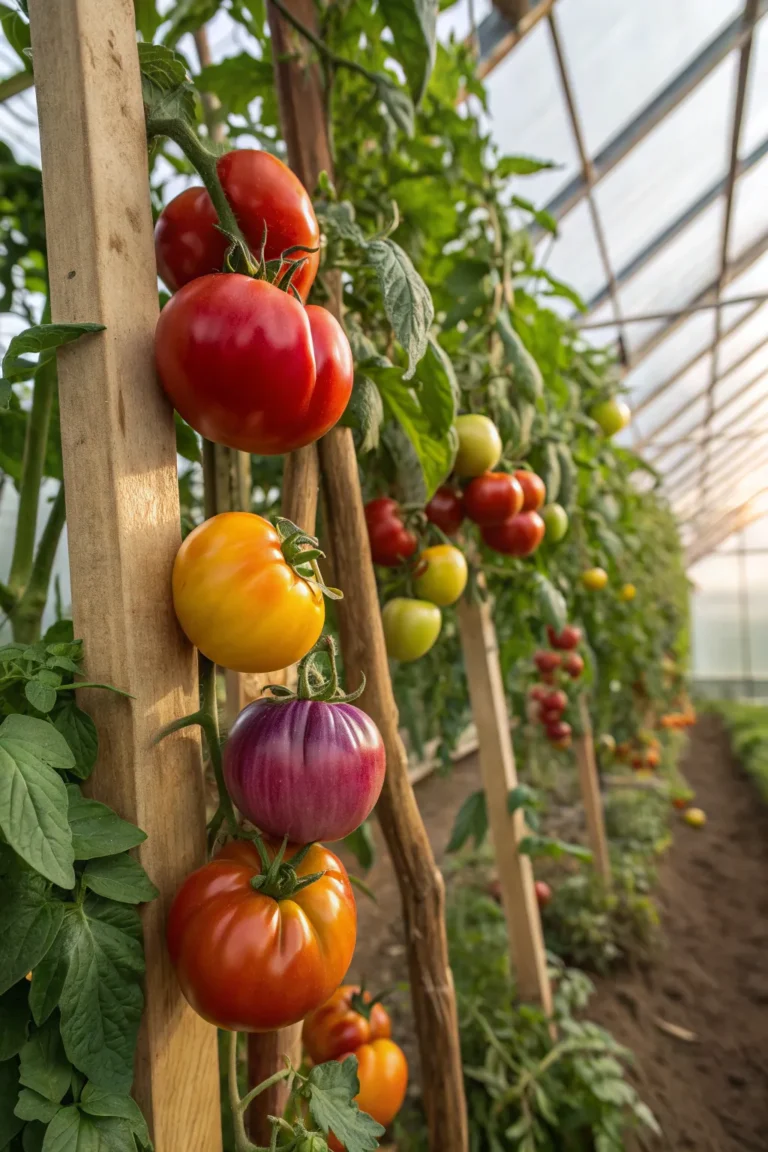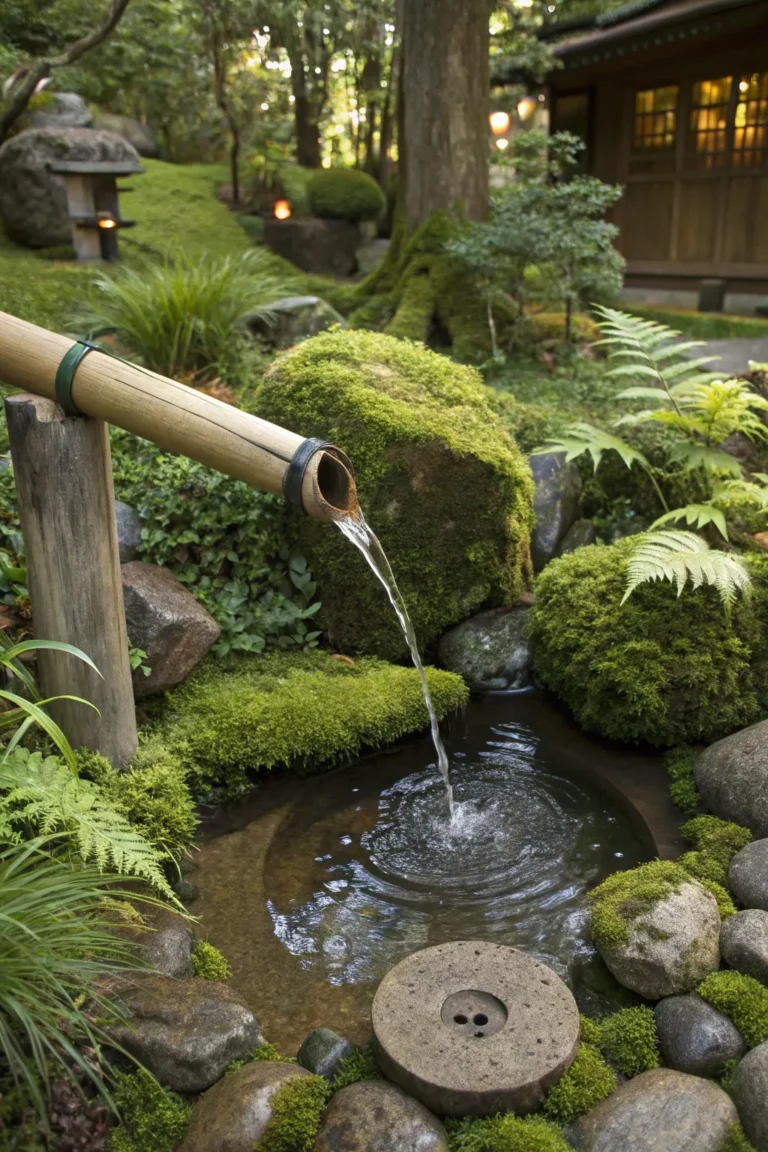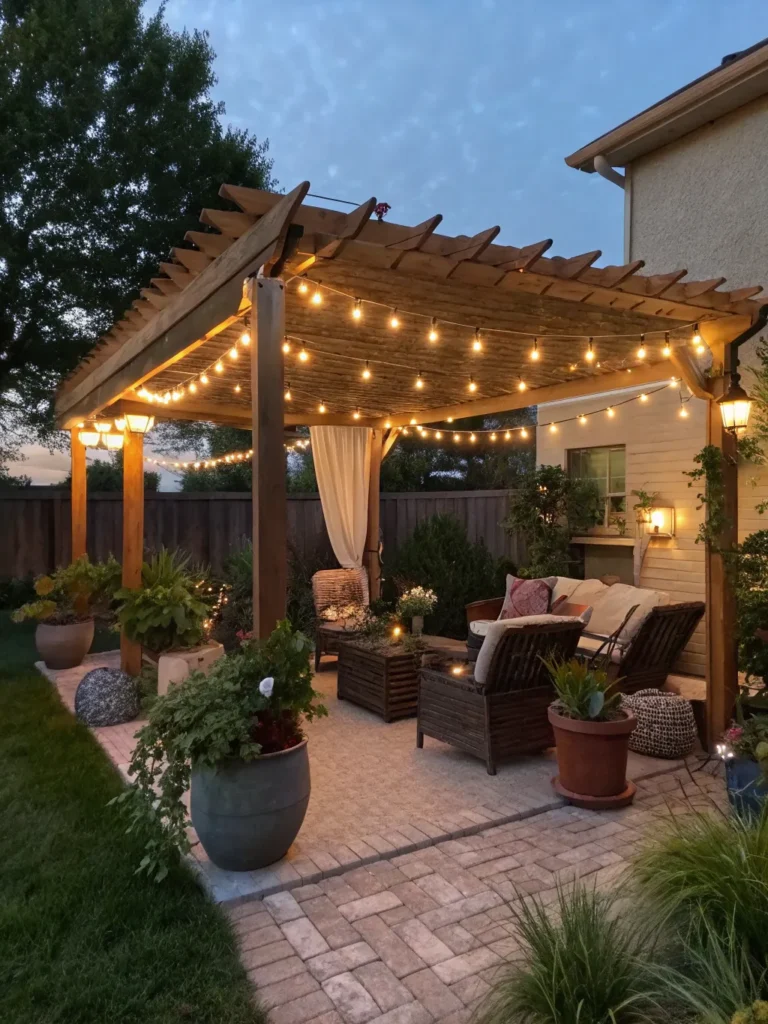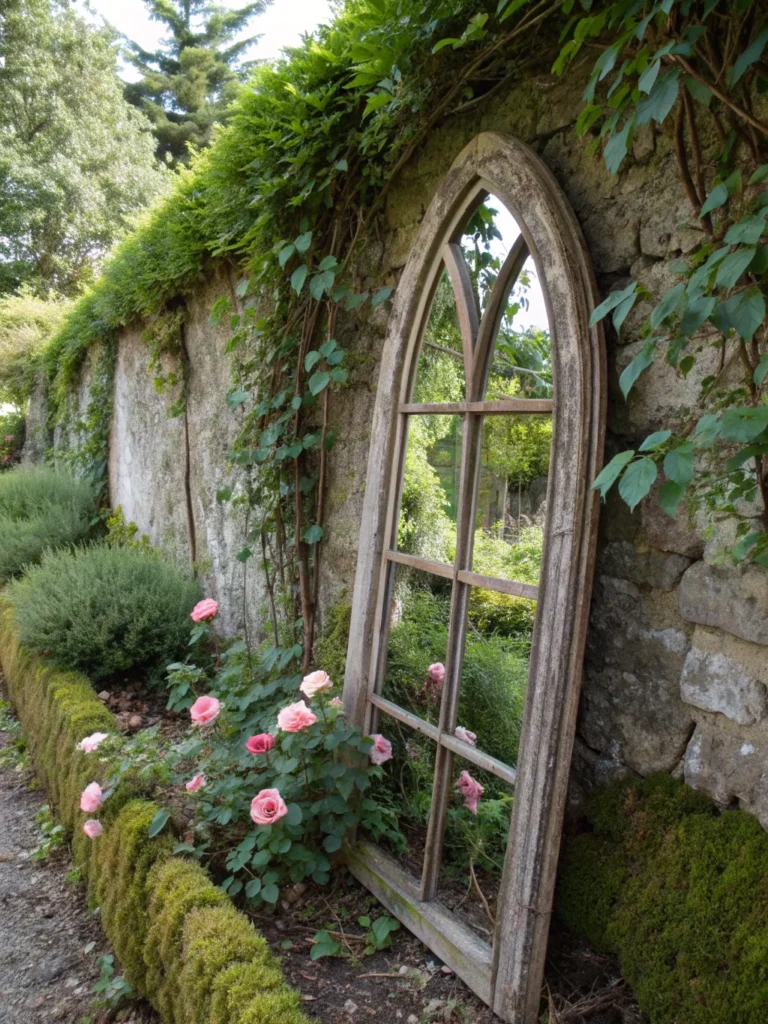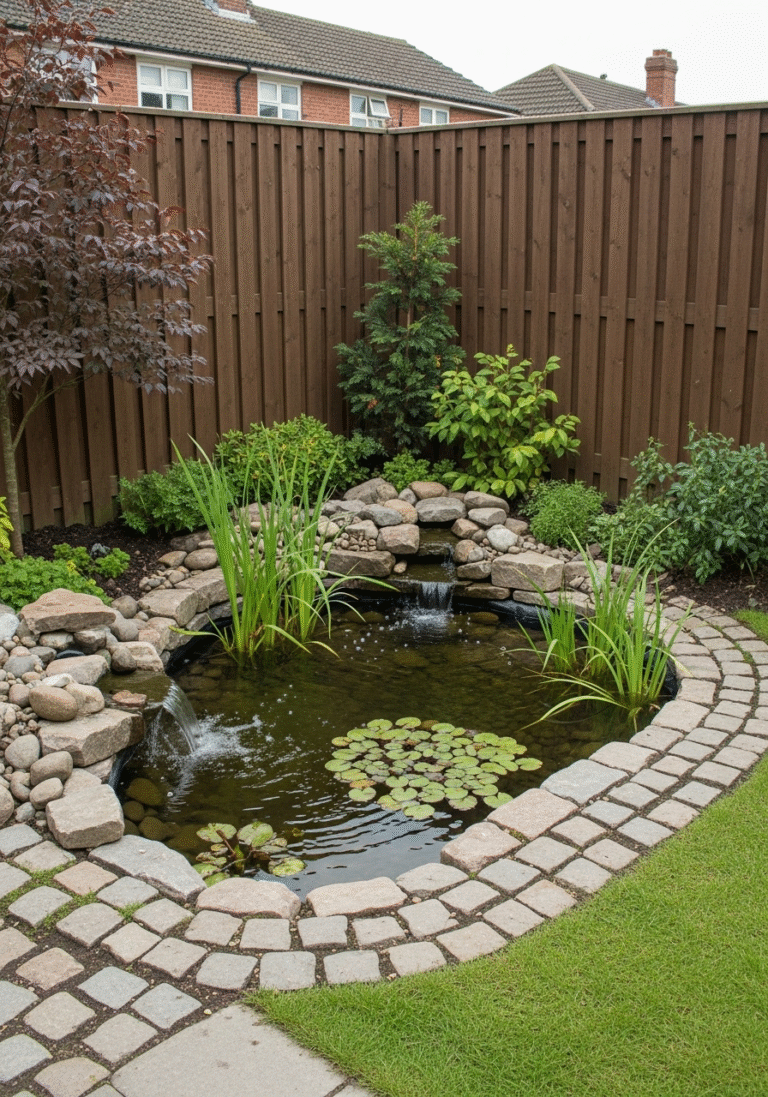35 Herb Gardens in Containers: Fresh Flavors at Your Fingertips
Fresh herbs can elevate any dish, and the best part is you don’t need a big garden to enjoy them. With 35 Herb Gardens in Containers, you can grow flavor-packed plants right on your patio, balcony, or even a sunny windowsill.
Imagine sipping tea made from your own chamomile, or plucking basil straight from a tin can to garnish dinner. Container gardening makes it easy, practical, and stylish. Whether you prefer rustic charm, modern flair, or quirky upcycled designs, these ideas will inspire you to create a mini herb oasis in any space.
In this article, we'll cover
- 35 Creative Herb Gardens in Containers to Inspire Your Space
- 1) Basil in a Tin Can
- 2) Mint in a Mason Jar
- 3) Rosemary in a Wooden Box
- 4) Thyme in a Teacup
- 5) Cilantro in an Old Wine Crate
- 6) Dill in a Colorful Pot
- 7) Oregano in a Vintage Bowl
- 8) Chives in a Hanging Basket
- 9) Lavender in a Ceramic Pitcher
- 10) Sage in a Tin Watering Can
- 11) Parsley in a Recycled Bucket
- 12) Lemon Balm in a Glass Jar
- 13) Chamomile in a Terracotta Pot
- 14) Tarragon in a Small Basket
- 15) Bay Leaves in a Clay Pot
- 16) Peppermint in a Steel Container
- 17) Marjoram in a Porcelain Cup
- 18) Catnip in a Planter Box
- 19) Fennel in a Window Box
- 20) Sorrel in a Coconut Shell
- 21) Stevia in a Tiny Vase
- 22) Echinacea in a Stylish Urn
- 23) Lemongrass in a Tall Jar
- 24) Arugula in a Shallow Dish
- 25) Watercress in a Table Planter
- 26) St. John’s Wort in a Flower Pot
- 27) Spearmint in a Glass Bowl
- 28) Vietnamese Coriander in a Tin Tray
- 29) Salad Burnet in a Wooden Tub
- 30) Winter Savory in a Funky Mug
- 31) Chervil in a Basket Pot
- 32) Mixed Herb Container for Easy Cooking
- 33) Vertical Herb Garden with Hanging Pots
- 34) Rolling Herb Cart for Patio Cooking
- 35) Herb Wall for Stylish Garden Décor
- Bonus Tips for Herb Container Success
- FAQs
- Which herbs grow best in small containers?
- Can I grow herb containers indoors year-round?
- How often should I water herbs in containers?
- What’s the easiest herb for beginners to grow?
- Do herbs need fertilizer in containers?
- Conclusion
35 Creative Herb Gardens in Containers to Inspire Your Space
1) Basil in a Tin Can
Basil thrives in simple containers, and a tin can is both budget-friendly and stylish. Its compact size fits perfectly on kitchen counters or window ledges.
To prepare, clean the can thoroughly, add drainage holes, and fill it with rich, well-draining soil. Basil prefers warmth and plenty of sunlight, so place it near a bright spot. Regular pruning encourages fuller growth, giving you a steady supply of fresh leaves. Pairing basil with tomatoes in cooking brings out its true flavor, making this container a must-have for food lovers.
2) Mint in a Mason Jar
Mint spreads quickly, so keeping it in a mason jar helps control its growth while adding rustic charm to your home. Its fresh scent is uplifting, and the leaves are handy for teas, desserts, or cocktails.
Choose a wide-mouthed jar for easy access. Add small pebbles at the bottom for drainage, then layer with quality soil. Mint grows best in partial sunlight, making it a versatile plant for both indoor and outdoor settings. Place the jar on a dining table or patio shelf to enjoy the fragrance and greenery every day.
3) Rosemary in a Wooden Box
A wooden box adds a rustic touch and provides enough depth for rosemary’s strong root system. Its woody stems and needle-like leaves not only look beautiful but also add robust flavor to cooking.
Ensure the box has drainage holes and line it with breathable fabric if needed. Rosemary loves full sun and doesn’t require frequent watering—perfect for gardeners who prefer low-maintenance plants. Over time, it can grow into a small shrub, giving your patio a Mediterranean feel while providing sprigs for roasts, breads, and aromatic oils.
4) Thyme in a Teacup
Growing thyme in a teacup adds whimsy and charm to your garden or kitchen. Its tiny leaves and trailing growth habit look delightful spilling over delicate porcelain.
Thyme thrives in well-drained soil and bright light, so teacups with small drainage holes are ideal. Keep the soil slightly dry between waterings to mimic its natural environment. Place it on a sunny windowsill or patio table where guests can admire the unique presentation. Beyond its looks, thyme is a versatile herb for seasoning meats, soups, and stews.
5) Cilantro in an Old Wine Crate
An old wine crate offers ample space for cilantro’s fast-growing roots while adding a vintage vibe to your garden. Its rustic appeal makes it both decorative and functional.
Fill the crate with nutrient-rich soil and position it in a sunny area. Cilantro grows quickly but tends to bolt in heat, so keep it in partial shade during warmer months. Harvest the leaves regularly for fresh salsas and curries. With its dual use as a planter and décor piece, a wine crate creates a charming focal point in any outdoor corner.
6) Dill in a Colorful Pot
Dill’s feathery leaves add texture and beauty to any garden, and planting it in a colorful pot brings a cheerful pop of personality. This herb grows tall and upright, making it perfect for balconies or patios that need vertical interest.
Place the pot in a sunny spot with well-draining soil, and water consistently to keep the roots healthy. Dill is excellent for flavoring pickles, fish, and salads. Position it near a seating nook to enjoy its delicate sway in the breeze, pairing well with other design touches like those in garden seating ideas.
7) Oregano in a Vintage Bowl
Oregano thrives in shallow containers, and a vintage bowl offers a touch of charm that feels both homely and stylish. Its trailing growth spills beautifully over the edges, creating a lush display.
Use light, sandy soil and keep the plant in a sunny location to maximize flavor intensity. Prune regularly to encourage growth and prevent it from becoming woody. This setup is not only functional but also makes a beautiful centerpiece on outdoor tables, blending seamlessly with rustic spaces. For additional rustic accents, you might draw inspiration from rustic fire pit ideas.
8) Chives in a Hanging Basket
Chives are compact yet eye-catching, and a hanging basket is the perfect container to showcase their slender green shoots. The elevated display also saves space, making it ideal for small patios or balconies.
Fill the basket with fertile soil and hang it in a sunny area. Water regularly but avoid soggy soil. The purple blossoms add ornamental value while attracting pollinators. Chives can be snipped year-round for soups, salads, and garnishes. For more space-saving vertical inspiration, explore small courtyard garden ideas.
9) Lavender in a Ceramic Pitcher
Lavender is as beautiful as it is fragrant, and planting it in a ceramic pitcher creates a cottage-style focal point. Its calming scent fills the air, perfect for patios and cozy corners.
Lavender loves full sun and prefers drier soil, so ensure the pitcher has proper drainage. Its blooms attract bees and butterflies, adding life to your garden. Place the container near a hammock or rest area for a relaxing atmosphere. For more ways to embrace its beauty, take a look at gardens with lavender.
10) Sage in a Tin Watering Can
A tin watering can repurposed as a planter gives sage a charming, rustic home. Its silvery-green leaves complement the metallic container, making it a stylish display piece.
Sage enjoys full sun and doesn’t require frequent watering, making it a hardy and low-maintenance choice. Position it near your outdoor cooking area, where fresh leaves can be easily picked for roasts or teas. The combination of utility and creativity makes this a standout container. To enhance outdoor dining spaces further, see patio BBQ area ideas.
11) Parsley in a Recycled Bucket
A recycled bucket makes a practical and eco-friendly container for parsley. Its deep roots thrive in roomy spaces, and the rustic look adds character to your garden.
Fill the bucket with nutrient-rich soil and place it in a sunny or partially shaded area. Regular watering keeps the leaves fresh and vibrant. Parsley works well as both garnish and ingredient in salads, soups, and sauces. For creative ways to combine greenery with seasonal beauty, explore August flowers that pair beautifully alongside herbs.
12) Lemon Balm in a Glass Jar
Lemon balm’s citrusy aroma makes it a delightful addition to kitchens and patios. A simple glass jar brings a fresh, modern look to this easy-to-grow herb.
Add small stones for drainage, followed by fertile soil. Place the jar in partial sunlight and keep the soil moist. Lemon balm leaves are excellent for teas, desserts, and calming remedies. The transparent container also showcases the roots, adding an educational element for kids and beginners.
13) Chamomile in a Terracotta Pot
Chamomile looks timeless when grown in a terracotta pot. Its delicate, daisy-like flowers not only bring beauty but also serve as ingredients for soothing teas.
This herb thrives in sunny conditions with well-drained soil. Terracotta naturally allows air circulation, keeping the roots healthy. Place the pot on a sunny patio table or windowsill for both decoration and use. For more charming and low-maintenance blooms that complement chamomile, check out gardens with wild flowers.
14) Tarragon in a Small Basket
Tarragon’s slender leaves and aromatic flavor make it perfect for a quaint small basket. The woven design allows good airflow and creates a rustic aesthetic.
Keep the basket in a bright, sunny location with well-drained soil. Tarragon pairs wonderfully with chicken, fish, and sauces. The portability of baskets makes it easy to move indoors during cooler months, ensuring a year-round supply of fresh herbs.
15) Bay Leaves in a Clay Pot
Bay leaves grow well in clay pots, which naturally regulate moisture and keep roots cool. Their dark green foliage looks elegant on patios or entrances.
Bay trees need sunlight and consistent watering when young. Over time, they can be pruned into neat shapes, doubling as decorative topiaries. Place the pot near an outdoor seating area where its evergreen beauty can be admired. For more stylish garden entrances to complement your potted bay, browse garden entrance ideas.
16) Peppermint in a Steel Container
Peppermint’s cool aroma and vigorous growth make it ideal for a durable steel container. The sturdy material keeps roots confined while giving a sleek, modern look.
This herb thrives in moist soil and partial sunlight, making it versatile for patios or kitchens. Regular harvesting encourages fresh growth and ensures a constant supply for teas, desserts, and refreshing drinks. To blend its modern touch with outdoor design, check out modern fire pit ideas that can complement a stylish steel setup.
17) Marjoram in a Porcelain Cup
Marjoram brings gentle, sweet flavor and works perfectly in small containers like porcelain cups. The delicate design adds elegance, making it a charming indoor display.
Keep the soil lightly moist and position the cup in bright, indirect sunlight. Marjoram’s compact size makes it suitable for windowsills or small shelves. Snip the leaves for seasoning meats, stews, or pasta dishes.
18) Catnip in a Planter Box
Catnip grows quickly and fills a planter box with soft, aromatic leaves your pets will adore. The larger surface area allows multiple plants to thrive together.
Choose a sunny spot with fertile soil, and water regularly. Catnip can be dried for homemade cat toys or teas. For more inspiration on maximizing planter boxes and garden corners, visit small garden corner ideas with water features.
19) Fennel in a Window Box
Fennel’s feathery foliage and tall stalks make it an eye-catching choice for window boxes. Its aromatic flavor enhances soups, salads, and fish dishes.
Plant fennel in rich, well-drained soil and give it plenty of sunlight. The window box setup provides easy access to the kitchen while adding texture and greenery to outdoor walls.
20) Sorrel in a Coconut Shell
Sorrel’s tangy leaves thrive in creative containers like coconut shells, giving a tropical twist to herb gardening. The shells add natural charm and are biodegradable.
Fill the shell with compost-rich soil and keep it in a sunny area. Sorrel grows quickly and offers a lemony zest perfect for soups and salads. For more eco-friendly inspiration, explore gardens with arbors ideas, which pair beautifully with natural planters like coconut shells.
21) Stevia in a Tiny Vase
Stevia is a natural sweetener, and growing it in a tiny vase makes it both decorative and practical. Its compact leaves are perfect for small containers, adding greenery to kitchen counters or shelves.
Keep the soil slightly moist and place the vase in a sunny spot. Regular trimming encourages new leaf growth. Fresh stevia leaves can be used in teas, smoothies, or desserts as a healthy sugar alternative.
22) Echinacea in a Stylish Urn
Echinacea’s vibrant purple petals and tall stems look striking in a stylish urn. Beyond its beauty, it’s prized for herbal teas and immune-boosting remedies.
Plant it in well-drained soil and ensure full sun exposure for best flowering. The urn elevates its appeal, making it a focal point in any garden corner. Its blossoms also attract pollinators, adding life and movement to the space.
23) Lemongrass in a Tall Jar
Lemongrass grows tall and elegant, making a tall jar the perfect container to showcase its long, slender leaves. Its fresh citrus scent adds an uplifting aroma to patios or kitchens.
Plant it in nutrient-rich soil and place the jar in full sun. Lemongrass thrives in warmth and moisture, so consistent watering is key. The leaves are perfect for teas, curries, and Asian-inspired dishes.
24) Arugula in a Shallow Dish
Arugula’s peppery flavor pairs well with salads, and a shallow dish makes harvesting leaves simple. Its quick growth ensures a steady supply of fresh greens.
Use fertile, well-drained soil and position the dish in partial to full sunlight. Water lightly but often to keep the leaves tender. The shallow setup allows you to easily place it on a balcony or table for convenient picking.
25) Watercress in a Table Planter
Watercress loves moisture, and a table planter provides enough space for its spreading growth. Its lush green leaves add a decorative touch while supplying nutrient-rich salad greens.
Keep the soil consistently damp and give the planter partial shade for best results. Watercress grows quickly, so regular harvesting helps maintain tender leaves. The elevated container also makes it easy to reach for fresh snips during meals.
26) St. John’s Wort in a Flower Pot
St. John’s Wort is known for its bright yellow flowers and herbal uses, making it a lovely addition to a simple flower pot. The cheerful blooms add color while the plant itself is often valued in natural remedies.
Use well-drained soil and place the pot in a sunny location. Regular watering will keep it thriving, but be careful not to overwater. Its flowers attract bees and butterflies, bringing more life to your garden.
27) Spearmint in a Glass Bowl
Spearmint’s cool, refreshing leaves make it a great herb for drinks and desserts. A glass bowl provides a unique look, showcasing both soil and roots while adding a modern touch.
Keep the bowl in partial sunlight and water frequently, as mint enjoys consistent moisture. Its fast growth makes it an easy herb for beginners. The fresh aroma also makes it a natural air freshener for kitchens and patios.
28) Vietnamese Coriander in a Tin Tray
Vietnamese coriander adds exotic flavor to soups and salads, and a shallow tin tray is a perfect fit for its sprawling growth habit. The wide surface area allows plenty of room for stems to spread.
Plant in nutrient-rich soil and water consistently to keep it lush. Place the tray in a bright but sheltered location, as this herb thrives with warmth and humidity. It grows quickly, so regular trimming ensures a steady supply of leaves.
29) Salad Burnet in a Wooden Tub
Salad burnet has delicate, cucumber-flavored leaves that are a refreshing addition to salads and cold drinks. A wooden tub provides ample room for its roots and adds rustic style.
Position the tub in full sun or partial shade, and water regularly. Its feathery leaves grow quickly and can be harvested throughout the season. The wooden container also complements traditional garden designs beautifully.
30) Winter Savory in a Funky Mug
Winter savory is a hardy perennial with spicy, aromatic leaves, and planting it in a funky mug adds a playful touch to your garden. Its compact growth makes it ideal for smaller containers.
Use sandy, well-drained soil and place the mug in a sunny location. Winter savory thrives in less fertile soil, so it’s low-maintenance. Its leaves are great for seasoning meats and stews, and the quirky mug makes it a conversation piece.
31) Chervil in a Basket Pot
Chervil’s delicate, fern-like leaves add elegance to any dish, and a basket pot gives it a cozy, rustic feel. The breathable weave also allows airflow around the roots, keeping the plant healthy.
Chervil prefers cooler conditions and partial shade, making it perfect for patios or shaded corners. Keep the soil evenly moist for best results. The mild, anise-like flavor of the leaves is excellent for soups, egg dishes, and fresh salads.
32) Mixed Herb Container for Easy Cooking
Combining herbs like basil, thyme, and parsley in one container creates a ready-to-use kitchen mix. This approach is not only space-saving but also practical for everyday cooking.
Choose a large container with good drainage and group herbs with similar sunlight and watering needs. Place it near your kitchen door or outdoor dining space for easy access. The mix of textures and aromas also makes the container visually appealing.
33) Vertical Herb Garden with Hanging Pots
A vertical herb garden is perfect for maximizing space in small areas. Hanging pots stacked on a frame or wall mount create a lush, green backdrop that’s both functional and decorative.
Select herbs with compact growth, like oregano, thyme, and chives. Keep the setup in a sunny location and water regularly, as elevated pots tend to dry out quickly. This arrangement not only saves floor space but also turns a plain wall into a living piece of art.
34) Rolling Herb Cart for Patio Cooking
A rolling herb cart makes gardening portable, letting you move fresh herbs right to your outdoor dining or cooking area. The wheels add convenience while the multi-level design provides space for several plants.
Fill the cart with lightweight containers and choose hardy herbs like rosemary, sage, and mint. Roll it into the sun during the day and tuck it under shelter when needed. This versatile option is perfect for patios, balconies, or urban gardens.
35) Herb Wall for Stylish Garden Décor
An herb wall is both a statement piece and a practical growing solution. Mounted containers or wall planters create a vertical garden that doubles as décor.
This setup is ideal for small spaces or courtyards where floor space is limited. Herbs like basil, parsley, and lavender can thrive in individual pots fixed to the wall. The result is a lush, green feature that brings fragrance, texture, and flavor right to your living area.
Bonus Tips for Herb Container Success
Choose the right soil mix
Herbs thrive in well-draining soil. A mix of potting soil with perlite or sand prevents waterlogging and keeps roots healthy. Avoid using heavy garden soil in containers.
Mind the sunlight
Most herbs need 6–8 hours of sun. Place containers where they can soak up natural light, or rotate them regularly to ensure even growth. For indoor setups, supplement with grow lights if needed.
Group herbs wisely
Combine herbs with similar water and light requirements in the same container. For example, rosemary, thyme, and oregano all prefer drier conditions, while parsley and basil enjoy more moisture.
Prune regularly
Frequent trimming not only provides fresh leaves for cooking but also encourages bushier, healthier plants. Pinch off flowers early to keep herbs focused on leaf growth.
Add style with containers
Choose creative planters—like mugs, baskets, or repurposed tins—to blend utility with design. Unique containers turn everyday herbs into decorative features.
FAQs
Conclusion
Growing herbs doesn’t require a sprawling garden—just a little creativity and the right container. From rustic tin cans to stylish herb walls, each idea offers both beauty and function, turning even the smallest space into a flavorful oasis.
Whether you’re after fresh garnishes for your kitchen, calming scents on your patio, or decorative greenery indoors, these setups prove that anyone can enjoy homegrown herbs. With these 35 Herb Gardens in Containers, you’ll have fresh flavors and charming décor right at your fingertips, season after season.
Discover more from Leafy Haven Home | Stylish Garden Ideas & Cozy Decor Tips
Subscribe to get the latest posts sent to your email.

